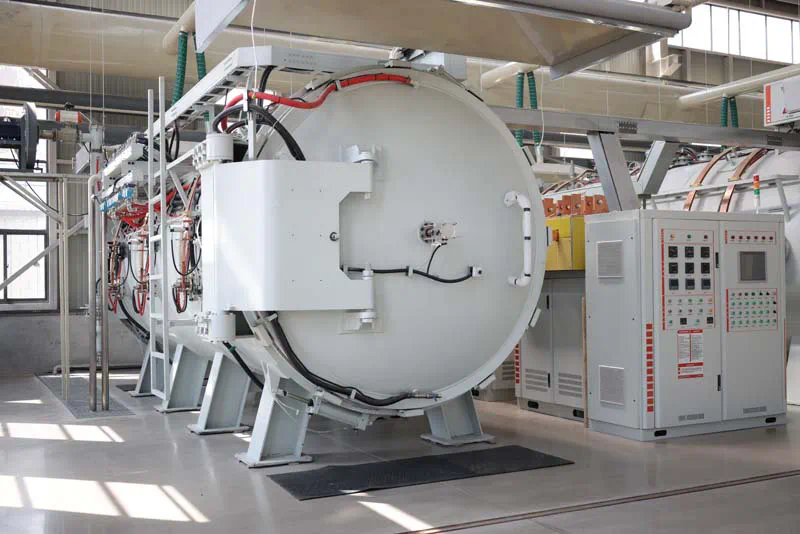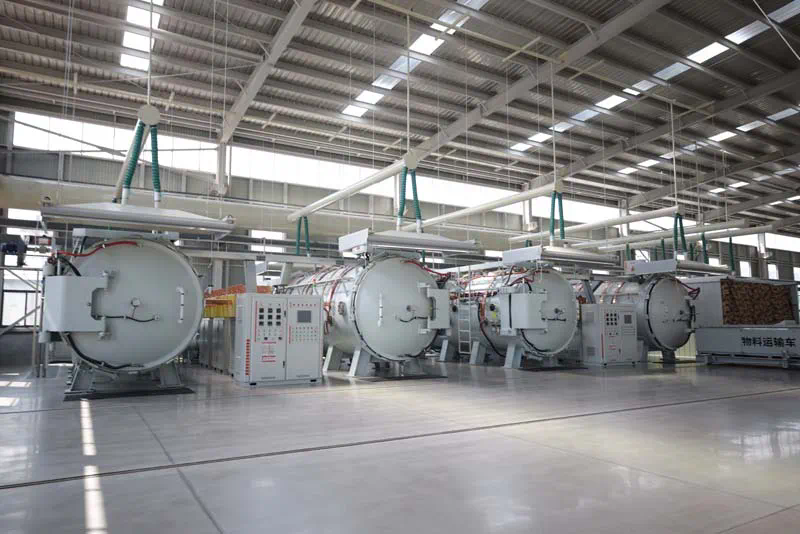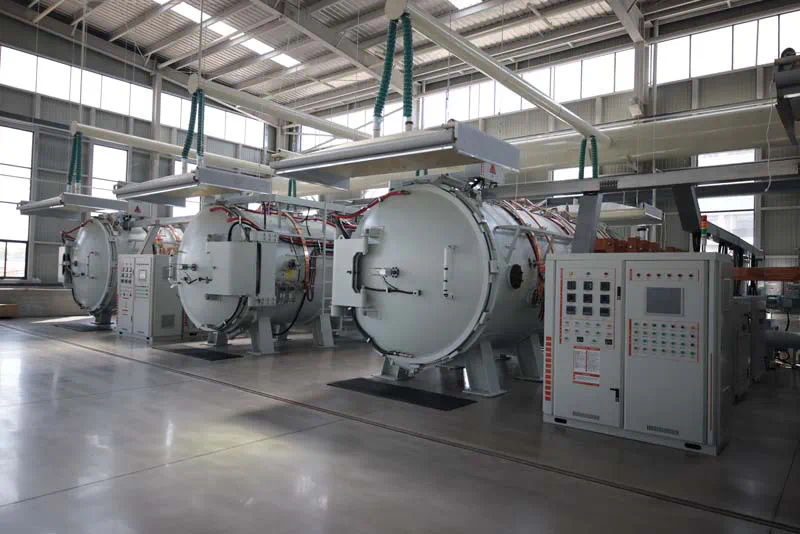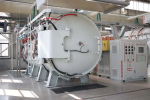Silicon-Carbide Crucible Use in Inert Atmospheres: Improving Melting Results
Silicon carbide (SiC) crucibles have become increasingly essential in various high-temperature applications, especially in environments where melting and casting processes require precise control over temperature and material interactions. One of the most significant advancements in the use of SiC crucibles is their integration into inert atmosphere melting. Inert atmospheres, typically composed of gases such as argon, nitrogen, or helium, are used to prevent unwanted reactions between the molten material and its surroundings. This allows for enhanced control over the material properties and ensures the purity of the molten metal or material being processed.

The use of silicon carbide crucibles in such conditions offers several advantages over traditional crucibles made from other materials. The key benefits include improved melting efficiency, resistance to thermal shock, and superior structural integrity under extreme conditions. Additionally, the properties of silicon carbide, such as its excellent thermal conductivity, chemical inertness, and high melting point, make it an ideal choice for handling a variety of metals and alloys, including those that are highly reactive at elevated temperatures.
Silicon Carbide Crucibles: An Overview
Silicon carbide is a compound of silicon and carbon, known for its hardness, high thermal conductivity, and remarkable resistance to oxidation. Crucibles made from silicon carbide are well-suited for high-temperature applications due to these properties. SiC crucibles are used in a wide range of industries, from metal foundries to advanced material processing. Their ability to withstand temperatures exceeding 1,500°C, along with their excellent resistance to chemical attack, makes them ideal for melting metals such as aluminum, copper, gold, and more.
In inert atmospheres, these crucibles are particularly effective because the surrounding environment is carefully controlled to prevent reactions such as oxidation or contamination. By eliminating reactive gases, manufacturers can ensure that the metals or alloys being melted maintain their intended properties without degradation from atmospheric exposure.
The Role of Inert Atmospheres in Melting
An inert atmosphere is one in which the gas or gases present do not react with the material being processed. Common inert gases include argon, nitrogen, and helium. These gases do not interact with most metals at high temperatures, providing a controlled environment where the molten metal can remain pure and uncontaminated. This is particularly important when dealing with reactive metals such as titanium, lithium, or zirconium, which are prone to oxidation and contamination when silicon carbide crucible australia exposed to air.
Inert atmosphere melting has numerous advantages, such as:
1. Enhanced Purity of Materials: By eliminating oxygen and other reactive gases, an inert atmosphere ensures that metals do not oxidize or form unwanted compounds, leading to a higher quality final product.
2. Control Over Alloy Composition: In some applications, precise control over alloy composition is critical. Inert atmospheres can help maintain the correct balance of elements in the alloy by preventing the loss of volatile components during the melting process.
3. Prevention of Contamination: When melting highly reactive metals, the risk of contamination from the crucible material or from the surrounding air is a significant concern. An inert atmosphere significantly reduces this risk, as does the use of high-quality crucibles like those made from silicon carbide.
4. Improved Melting Efficiency: The use of an inert atmosphere can improve the efficiency of the melting process, as some gases, such as argon, are used to promote better heat transfer and maintain consistent temperatures.
Benefits of Using Silicon Carbide Crucibles in Inert Atmospheres
Silicon carbide crucibles are particularly beneficial in inert atmosphere environments. The high thermal conductivity and low thermal expansion of SiC allow for more consistent heat distribution during the melting process, reducing the risk of thermal shock and material degradation. This makes SiC crucibles an excellent choice for melting metals at high temperatures.
Some of the key benefits of using SiC crucibles in inert atmospheres include:
1. Thermal Stability and Resistance to Thermal Shock
Silicon carbide has excellent thermal stability and is highly resistant to thermal shock. This makes it particularly suitable for environments where rapid temperature changes occur, such as when molten metal is transferred into a mold or when heat treatment cycles are applied. In inert atmospheres, where high temperatures are often reached and sustained for long periods, silicon carbide’s ability to withstand extreme temperature gradients is a critical advantage. Unlike other materials that might crack or degrade under thermal stress, SiC remains stable and maintains its structural integrity.
2. High Melting Point and Chemical Inertness
SiC crucibles can withstand temperatures well above the melting points of most metals, making them highly suitable for high-temperature melting processes. The material itself has a melting point of around 2,700°C, ensuring that it can handle the most demanding applications. Additionally, silicon carbide is chemically inert in many environments, meaning it does not react with the molten metal or its surrounding gases. This characteristic makes SiC crucibles ideal for use in environments where contamination must be minimized.
3. Improved Material Purity and Control
In inert atmospheres, the risk of contamination from the crucible material is significantly reduced when using silicon carbide. Unlike other crucibles that might release impurities or react with the metal, SiC provides a clean and stable interface between the molten metal and the crucible. This is especially important when melting high-purity metals or alloys that require strict control over their composition. The ability to maintain a contaminant-free environment is one of the main reasons silicon carbide crucibles are preferred in these settings.
4. Excellent Resistance to Corrosion and Wear
Silicon carbide crucibles are highly resistant to corrosion and wear, even when exposed to harsh chemicals or molten metals. This durability extends the lifespan of the crucible, reducing the need for frequent replacements and thus lowering overall operating costs. The resistance to chemical reactions also ensures that the integrity of the molten material is preserved throughout the melting process.
5. Faster Heating and Cooling Times
Due to the high thermal conductivity of silicon carbide, heat is evenly distributed across the surface of the crucible. This allows for faster heating and cooling times during the melting and solidification processes, which can improve overall productivity and energy efficiency. The uniform temperature distribution also ensures that the molten metal is heated to the desired temperature without the risk of hot spots that can lead to uneven melting or overheating.
Applications of Silicon Carbide Crucibles in Inert Atmospheres

Silicon carbide crucibles are used in a wide range of applications, particularly where the melting of high-temperature, reactive, or high-purity materials is required. Some of the most common applications include:
1. Metal Casting and Alloy Melting
In metal foundries, silicon carbide crucibles are used for melting various metals, including aluminum, copper, gold, and platinum. The use of an inert atmosphere ensures that the molten metal remains free of contamination, while the crucible’s thermal properties allow for more efficient melting. This is particularly important when working with high-value metals or alloys that require precise temperature control to maintain their desired properties.
2. Semiconductor Manufacturing
In semiconductor manufacturing, the purity of materials is of utmost importance. Silicon carbide crucibles are often used in the production of silicon wafers and other semiconductor materials. These materials are typically melted in inert atmospheres to avoid oxidation and other reactions that could compromise their purity. Silicon carbide crucibles offer the necessary thermal stability and chemical resistance to handle the high temperatures involved in semiconductor production.
3. Precious Metal Refining
Silicon carbide crucibles are widely used in the refining of precious metals like gold, silver, and platinum. The ability to melt these metals in an inert atmosphere helps to prevent oxidation and contamination, ensuring that the final product meets high purity standards. The durability and heat resistance of SiC crucibles make them ideal for repeated use in these demanding applications.
4. High-Performance Alloys and Superalloys
When producing high-performance alloys and superalloys, especially those used in aerospace or high-temperature industrial applications, the melting process must be carefully controlled. Silicon carbide crucibles provide the necessary thermal conductivity and inertness to ensure that the molten material remains pure and free from contamination. Inert atmospheres further enhance the control over the alloy’s composition, making SiC crucibles an essential tool in these industries.
Challenges and Considerations in Using Silicon Carbide Crucibles
While silicon carbide crucibles offer many advantages, there are some considerations to keep in mind when using them in inert atmospheres.
1. Cost of Silicon Carbide Crucibles

Silicon carbide crucibles tend to be more expensive than crucibles made from other materials, such as clay or graphite. The higher cost is due to the specialized manufacturing process and the high-quality materials used to produce the crucibles. However, their durability and longer lifespan often justify the initial investment, as they reduce the need for frequent replacements.
2. Proper Handling and Maintenance
Despite their durability, silicon carbide crucibles still require proper handling and maintenance to maximize their lifespan. Care should be taken to avoid sudden temperature changes, as this can lead to thermal shock and cracking. Additionally, while SiC is resistant to many chemical reactions, it can still be degraded by prolonged exposure to certain aggressive substances. Regular inspection and cleaning of the crucible are essential to ensure optimal performance.
3. Compatibility with Specific Materials
While silicon carbide is compatible with a wide range of materials, it is important to consider the specific properties of the metal or alloy being melted. Some highly reactive materials, such as lithium or alkali metals, may require additional precautions or specialized crucibles. In such cases, it is important to consult with material experts to ensure that the crucible will perform adequately in the given environment.
Conclusion
Silicon carbide crucibles play a crucial role in improving melting results, particularly in inert atmospheres. Their unique combination of thermal stability, chemical resistance, and durability makes them ideal for high-temperature applications where purity and material integrity are paramount. Whether in metal casting
https://devicesplayer.com/
